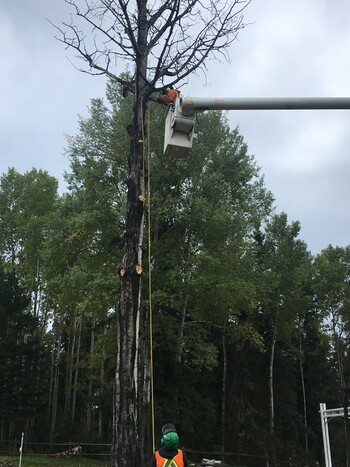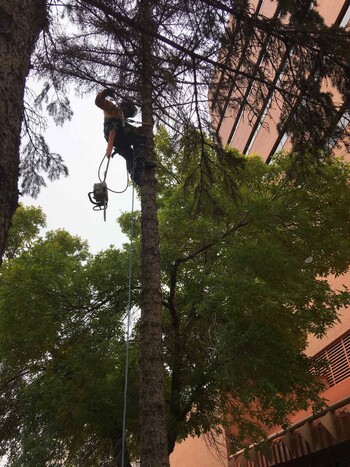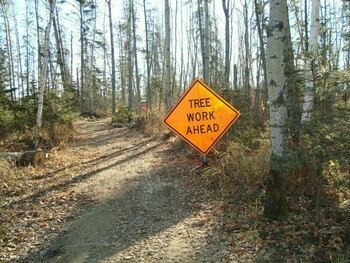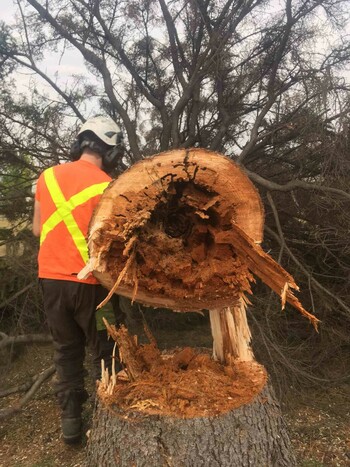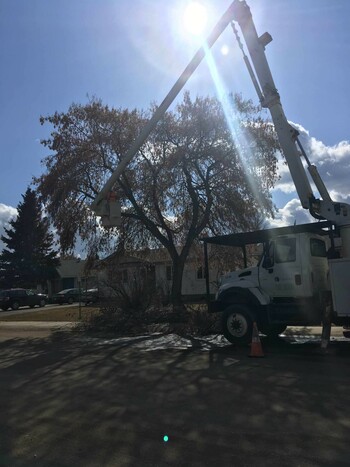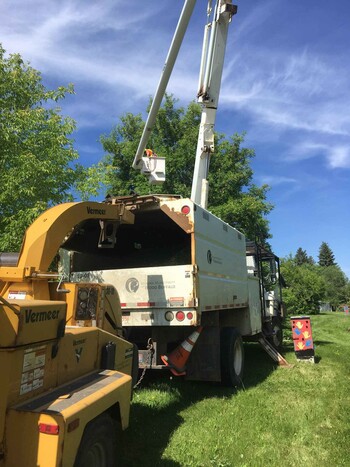Urban Forest Strategy: Regional Municipality of Wood Buffalo
Ecosystem Management
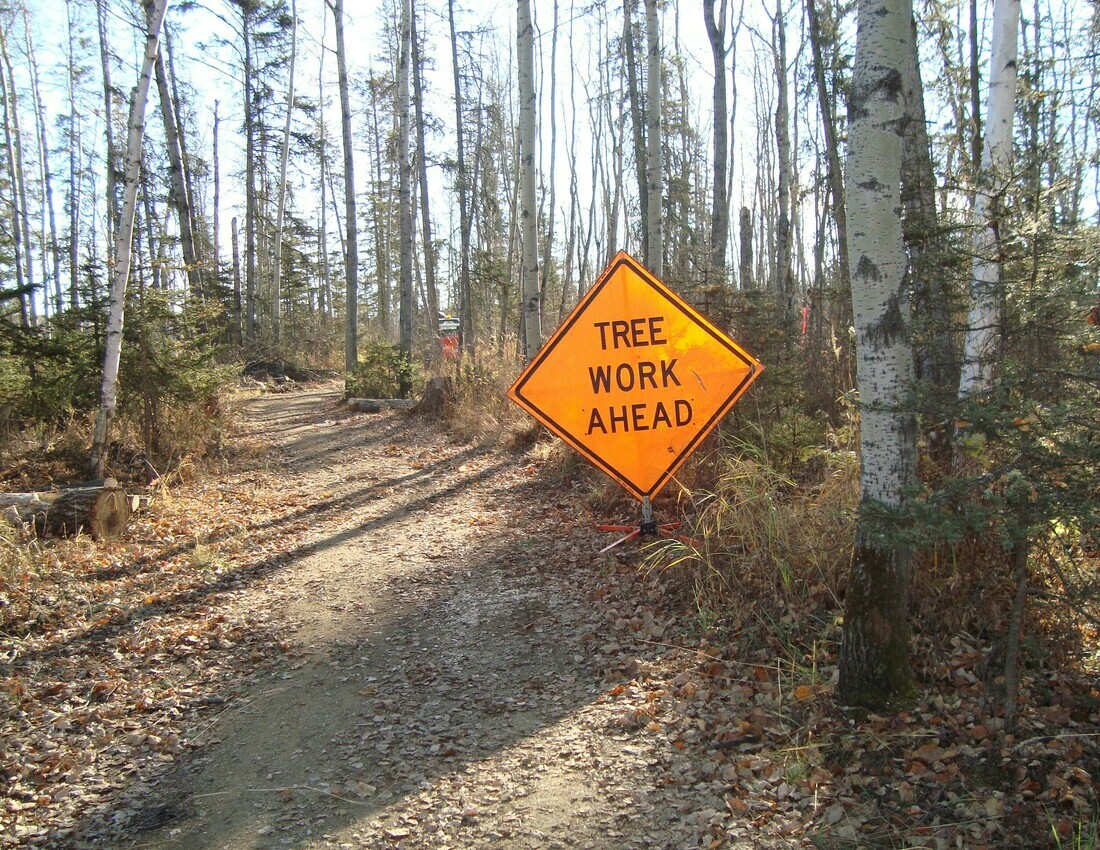
Overview
The Regional Municipality of Wood Buffalo (RMWB) Urban Forest Strategy provides direction on managing and enhancing the social, economic and environmental benefits of the municipality’s urban forest and outlines a vision, core principles, objectives and recommendations for the next 20 years. The municipality’s efforts to conserve, enhance and manage their urban trees and forests is an excellent example of a nature-based solution in action.
Objectives
One of the main drivers for the development of the Urban Forest Strategy in the RMWB was to reduce risk in the urban forest and wildland-urban interface following the devastation of the 2016 Horse River Wildfire and implement the FireSmart program recommendations. But beyond reducing risk, the Strategy also identifies the role and benefits of trees in the urban space, sets a vision and core principles for the region on urban forests, assesses opportunities for enhancement and best practices for management, and coordinates municipal tree policies, practices and procedures across the RMWB.
Project Planning
Following the devastating Horse River Wildfire in 2016, RMWB wanted to integrate lessons learned from the wildfire and the FireSmart program recommendations into urban forest management. Planning for the Urban Forest Strategy began in spring 2017 and concluded in fall 2018. The project was led by the RMWB Parks and Recreation Department and a steering committee that was established. Municipal staff and the consulting team (LEES+ Associates and Arbor-pro Tree Consulting) engaged the public through workshops, press releases, trade shows and the distribution of a general survey.
The Urban Forest Strategy was developed through a six-phase process:
- Project kickoff
- Inventory and analysis
- Needs assessment
- Community engagement
- First and final draft of the Strategy
- Presentation to City Council
The Strategy was put into place soon after its approval by Council. Created in conjunction with the Parks Master Plan, the Urban Forest Strategy is also related to other important municipal planning and policy documents, including: RMWB’s Wildfire Mitigation Strategy, Post-Fire Wildfire Hazard Assessment, Municipal Development Plan, Strategic Plan, Engineering Servicing Standards, as well as the Municipal Government Act.
The Business Side
The Urban Forest Strategy can be categorized under both risk reduction and urban offsetting business models associated with NBS. RMWB leveraged funds from its operating budget to develop and implement the Urban Forest Strategy. The Strategy cites a New York City study that quantified the value of each urban tree at roughly $200 in terms of the multiple benefits that trees provide the municipality, including:
- Reduction in stormwater runoff and the associated cost savings in stormwater infrastructure and flood management
- Improvements in air quality, greenhouse gas sequestration
- Lowering energy costs by reducing the urban heat island effect
Trees and urban forests and green spaces also add value in terms of community health, recreation, social and cultural benefits, and a well-managed urban forest can reduce the risks (economic, environmental, and social) of and costs associated with wildfire.
The Nature Side
Urban forests play a huge role in mitigating the effects of climate change. Trees sequester carbon from the atmosphere, reduce stormwater runoff and protect infrastructure, and lower ambient air temperatures, resulting in a decrease of the heat island effect. Trees also provide shade and improve air quality in cities, while trees and forests increase biodiversity and habitat for birds and other species of wildlife, plants and fungi.
The Community Side
The Urban Forest Strategy describes RMWB’s urban forest as a “vital part of the region’s character, spirit and vibrancy.” There are physical and mental health benefits to RMWB residents as the urban forest is enhanced and trees are planted throughout the municipality in addition to recreational opportunities in urban green spaces and forests.
Urban trees and forests also decrease the heat island effect of cities, making communities more comfortable in summer (while also providing shade) and decreasing energy costs to cool buildings. Green spaces and urban trees help to improve air quality, aesthetic value, and real estate marketability of neighbourhoods. A well-managed urban forest and urban-wildland interface in line with the FireSmart recommendations will help reduce the risk to citizens, infrastructure and property in Fort McMurray and RMWB in the event of wildfire near or in the municipality.
Sources
Photos courtesy RMWB
Calculating Tree Benefits for New York City. New York City Parks.
Alexander, Craig. Urban Forests: the Value of Trees in the City of Toronto. TD Economics; TD Bank Group. June 9, 2014. 4 p.
